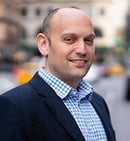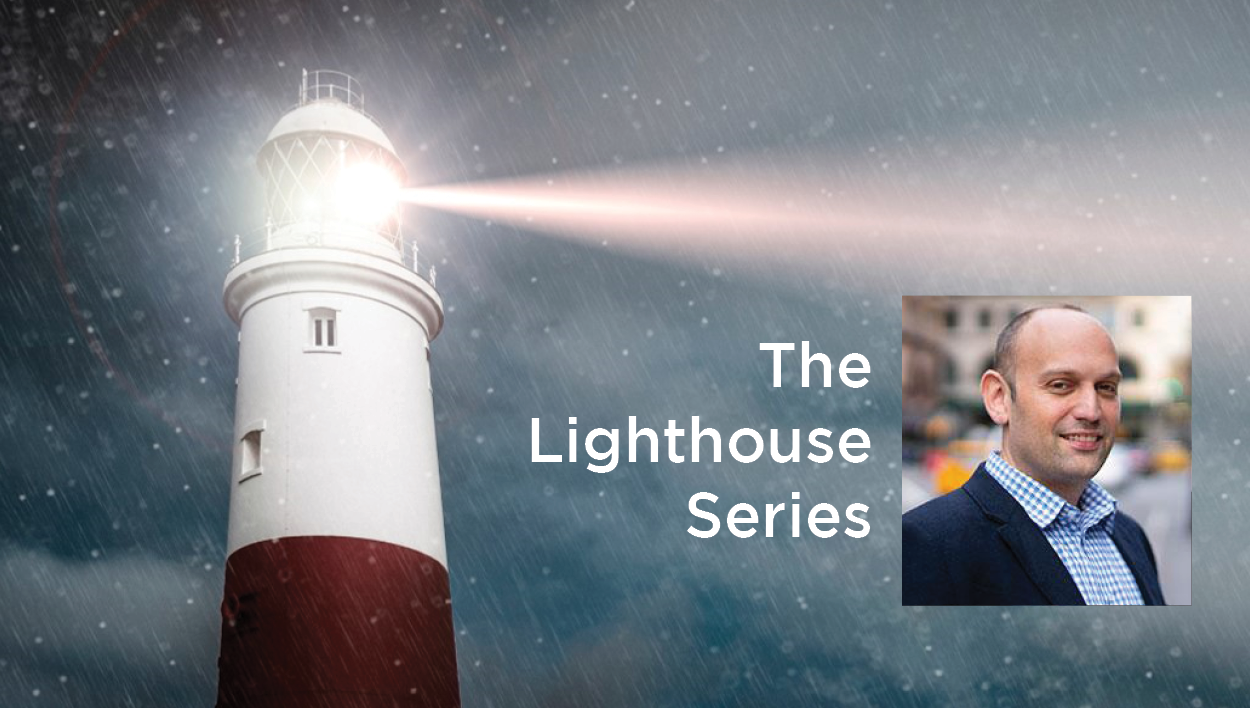The Lighthouse Series features a weekly Q&A where we ask one of our CEOs five questions that are matters of the heart, mind, and business.
This week, we interviewed Eric Berry, Co-Founder and CEO of TripleLift, to find out how he's muddling and modeling his way through the fog, winds, and frightful waves currently underway. See how Eric's process gives him a deep understanding of his company’s chemistry.
THIS WEEK'S CEO: ERIC BERRY

Eric Berry is the Co-Founder and CEO of TripleLift. Under his leadership, the company has more than doubled in growth each year and has been listed on each of the Inc. Fast 5000, Deloitte’s Technology Fast 500™, and Crain’s New York Fast 50 three years in a row. The nearly 300-person company now spans three continents. Previously, Eric was a leader on the client services and product architecture teams at AppNexus, and an attorney at Simpson Thacher & Bartlett LLP. Eric received his bachelor's and master’s degrees in computer science from MIT and a J.D. from New York University School of Law. He was named EY Entrepreneur Of the Year® 2019 New York Award winner in the category of Marketing and Advertising.
1. Triplelift continues to build a large, fast-growing private company that wins awards every year. How are you doing this, and what is it like to have three founders?
When we were starting, we moved very quickly to understand market needs. We built solutions that fit our customers - how they thought about the market and how they were used to buying. While we had a thesis that the company was built around, we pivoted several times around that thesis, embracing the pragmatic approach above. Sunk costs can be a strong motivator for early-stage companies, but we completely abandoned products that didn’t have the right fit. That was pretty hard, but very important.
We were fortunate to have focused on a product that really resonated with our customers. Since then, I’ve really focused a lot on the strategic alignment of the company through various time horizons. We have had regular offsites with the leadership team, focusing on what could disrupt us as well as the largest opportunities that we have, both adjacent and within our general thesis. We’ve committed to the ongoing dispassionate analysis of our product mix, the market, and our team. Each member of the team comes with robust written analyses that are prepared well in advance and shared, and which form the basis of our discussion. But more generally, we try to have products aligned to the various horizons (similar to the McKinsey Three Horizons model) with theses that support each of their development.
Having my other two founders is a blessing. We’re very different people with very different perspectives on the market. But we also have absolute confidence that each of us is doing the right thing by the company and with completely aligned motivations. This means that when we have disagreements, we are able to engage on a level of trust and respect. This has led to many of the ideas and qualities that have made the company successful.
2. Eric, you were named E&Y Entrepreneur of the Year in 2019. Per your previous comments, you obviously have a proven method of stewarding a company. Are your principles of leadership and management changing or adjusting during this black swan phase?
A couple years ago at an Edison event at West Point, we talked about the OODA loop - observe, orient, direct, act. The historical cadence of our OODA loop has been around twice a year, with check-ins the other quarters. Now it’s nearly every week. It means our exec team, for example, has gone from meeting Monday mornings for an hour, to three times a week for four hours total each week. There’s a lot more data to look at, so we have to be comfortable moving much more quickly and decisively, and with much more uncertain information.
One important difference has been that in prior years we’d create an operating plan and a financial model for the year and they would be tightly interconnected. We’d hire the people that would enable us to achieve the results we wanted on the year while maximizing our profitability. This year, it’s flipped. We’ve created a number of financial models for the year based on different trajectories that we see the economy and our industry moving, and then we have an operating plan that the financial model will allow us to sustain to emerge breakeven. On a regular cadence, we see which financial model is the most accurate and adjust our operating plan to fit the curve.
3. You state you are a technology company first, but I know you are a very creative company that unlocks rich content. How does the company nurture both the creative side and the engineering side to deliver great product experiences every week?
It’s really important that people in the company are tied to our actual deliverable. Too often the R&D side of a business can be siloed from the end customer and what they care about. This gets back to our commitment to education. We make a point of highlighting what’s actually happening: that our team is creating experiences that power billions of ads a day - ads that people actually see and publishers have on their site. So at company-wide town halls, for example, we highlight the great ads that our partners have run, such as the ads that have some of the highest performance on the platform, as well as publisher placements that are performing the best, or that have the highest volume, to make sure people really understand what our platform is producing.
4. Your HQ is in NYC, ground zero of the virus. How is the company dealing with WFH and the stress of this situation?
Communication is paramount. People are nervous. Whatever was appropriate pre-coronavirus doesn’t cut it. Steering a company when you’re all in the office together is one thing, but when you’re remote, it’s completely different. We’ve always believed that the company is better off if everyone understands not just what our decisions are, but the rationale for the decisions. So we’ve spent a long time talking about the actual state of things in NY and across the country and world, talking about what we do and don’t know, what we’re thinking about in terms of the office reopening, etc. We’re not going to be able to change what’s going on in NY, but taking unnecessary stress out of people’s lives is important. To that end, while we reduced headcount, we did do it with the intent of only doing it once. This means we actually cut deeper than we might have otherwise, but it has now put us in a much more stable financial position.
We’ve held AMAs, sent at least two communications a week about the industry and the state of affairs generally, committed to at least one-month notice before we open the office (while ensuring it won’t be until September 1 in any event), discussed our financial models in great detail, and continued to be transparent about all of our financial measures within the company. We’ve created a company-wide team-based strategy competition where people can submit ideas about the best things the company could do in the current situation, where the winning team splits options.
5. How do you sustain yourself while keeping everyone else pushing forward?
I think this is a great opportunity for me to connect with my family. We eat every meal together - this is an opportunity I may not have again. It creates intimacy and a separation from work (we also have a strict ‘no phones at the table’ policy).
At TripleLift, we’ve instituted a policy where everyone in the company must take at least two days off per month. We’re starting to think more about what the problems are that people might have in their personal lives that we can address. This includes, for example, whether they have a decent tech setup at home - which is solvable - and other more complex questions including childcare and what the company can do in a time like this.

